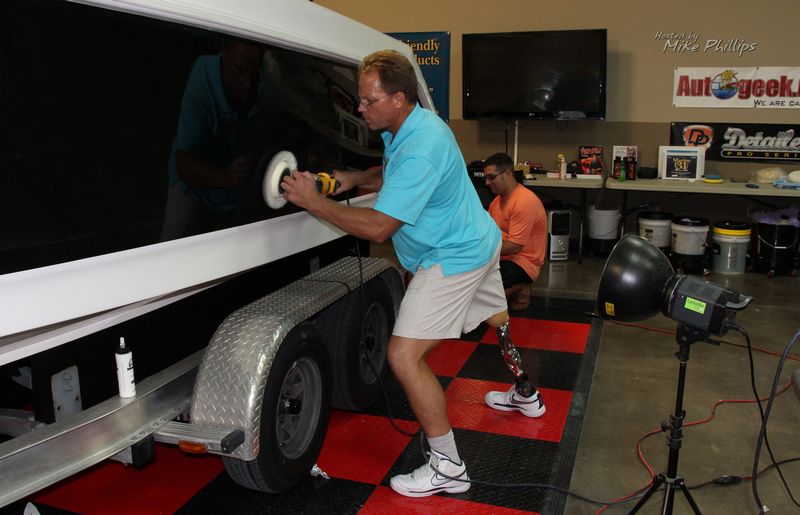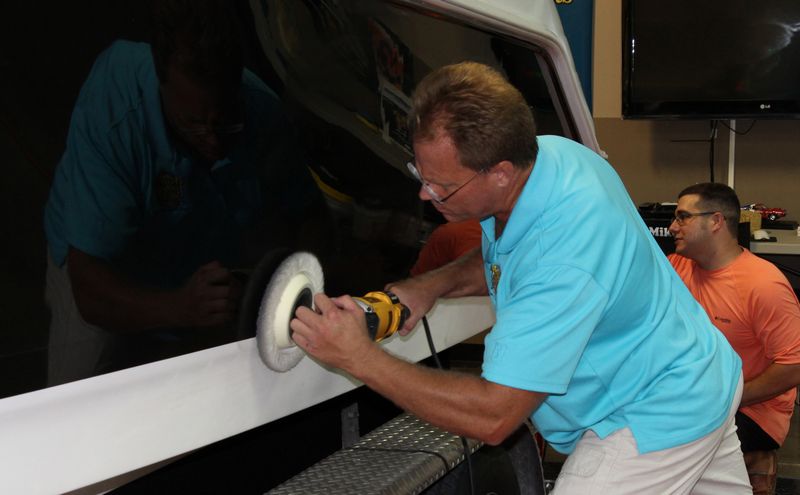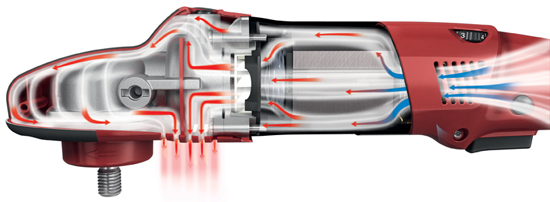Old Tiger
New member
- Oct 27, 2009
- 4,468
- 0
Wow Jim! I didnt realize you took the plunge too!I agree, Jim! I really like mine! I have become one with my 849X!
Follow along with the video below to see how to install our site as a web app on your home screen.
Note: This feature may not be available in some browsers.
Wow Jim! I didnt realize you took the plunge too!I agree, Jim! I really like mine! I have become one with my 849X!
Wow Jim! I didnt realize you took the plunge too!
I did. I have some miles on it now and I am very happy with my purchase. I think Dewalt really did a nice job on this tool! I am glad you like yours also buddy!! :cheers:
It is my first rotary and it seems so perfect. The ergonomics and power are superb. I may be temptted to get a Dynabraid someday too!
I'm curious if you've had a chance to try the new Opt Polish and Finish on the DA yet.
Thanks,
Rasky
Great thread Mike.
I can't compare it to the Flex rotary being I never used it but I prefer the 849x over my Makita that was stolen from the back of my truck.
Do not try the Flex PE or you will have another rotary.



























Very nice review Mike. That Flex sure does have plenty of good things going for it. The only real negative seems to be the high initial cost.
The one remaining unanswered question I have is, can it be used for high volume paint correction work? The DeWalt looks heavy duty, like it was made for high volume work. Can the same be said of the Flex?
It does look beautiful indeed. No way i could swing that kinda cash for a rotary right now but its nice to have some input as to a comparison of the 2 polishers.
Quick question...what major differences do you see between the PE and the 3403 flex rotary?

Also to those who were interested in the 3" pads...AG does sell some...they are made by Griots...of course!

I must say that detailing cart looks super sweet....another wish list item...grrr....i wont buy it till i finally have a stationary place to do my detailing...too bulky for mobile detailing..im 25..i can still lean over to clean my pads LOL.







Mike,
can't quite tell, from the side-by-side photo above of the Makita and the Dewalt, if one is slightly taller and wider than the other. From that photo the Makita seems a bit more bulky, but it's hard to tell from the angle the Makita seems to be sitting.
Wish I'd have taken the time to compare all 3 rotary's while in Evansville, but I knew you were tired and needing to go, so I didn't bother.
I'm looking to pick one or the other real soon. Is there much difference in the weight of the two? In fact, if things go right, I may pick up a PE 14 and one of the other two at the same time.
Mike,
I can't quite tell, from the side-by-side photo above of the Makita and the DeWALT, if one is slightly taller and wider than the other. From that photo the Makita seems a bit more bulky, but it's hard to tell from the angle the Makita seems to be sitting.

I'm looking to pick one or the other real soon. Is there much difference in the weight of the two? In fact, if things go right, I may pick up a PE 14 and one of the other two at the same time.
Myself I'm happy, very happy with my 849x
I'll back you up on this... if a person is going to get just one rotary buffer the D
eWALT can do it all.
I remember when a Rep from DeWALT came to the forums back in 2008 or so and asked detailers for their input on what type of features they would like to see in a new design.
I probably still have my private message conversations with this Rep.
I'm happy to say that as far as I can tell, all the suggestions the detailing community gave to him they incorporated into the 849X. It's the best full size rotary buffer money can buy.
Down the road, if you're successful in your detailing business, then add the Flex PE14.
Then no matter what the project, you can pick and choose the best tool to suit your taste.

I tried out the 8" 3M pads using the DeWalt.
I found it to still be very smooth and plenty of power to turn the wheel at its set speed.
A beast but yet so smooth to operate it.
Test Spot Results
Did 3 Test Spots starting with the least aggressive products and pads to get the job done...
After each section was buffed I then wiped the section clean using MS followed by IPA.
The percentages below are simply based upon experience from doing compound and polish testing. Usually it's timed, for this test I just counted to 6 section passes after 1 pass to spread the product out.
- Test Spot 1 - Optimum Finish with a Gray CS Finishing pad on 1000 RPM - 65% Swirl Removal
- Test Spot 2 - Optimum Polish II with White CS Polishing Pad at 1000 RPM - 80% Swirl Removal
- Test Spot 3 - Optimum Compound with an Orange CS Cutting Pad at 1000 RPM - 95% Swirl Removal
After the compounding on Test Spot 3 I then re-polished using the gray finishing pad with the Optimum Finish and chemically stripped again with both MS and IPA and the finish looked swirl free. The sun is too far down in the sky to pull the car out and inspect in the sun so all I used was the Brinkmann Swirl Finder Light.

Tried to take close-up shots across from where I marked the painter's tape with the numbers, 1, 2, and 3 but what I could see with my eyes I just couldn't capture with my camera.

65% swirl removing using Optimum Finish Polish using a gray finishing pad is very impressive:dblthumb2:

